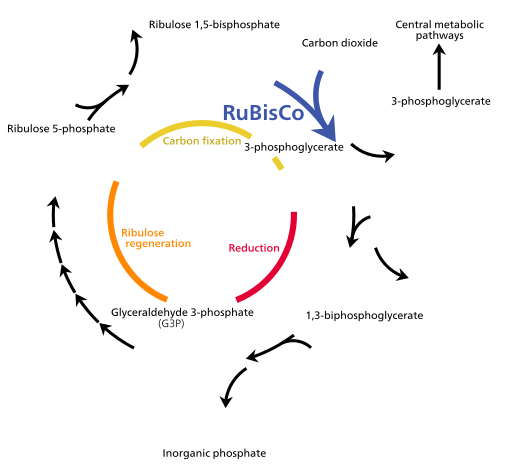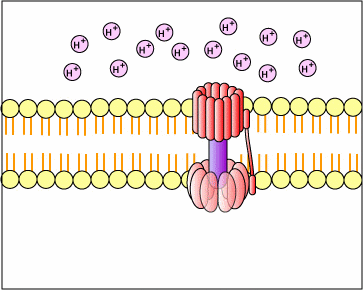Cellular Respiration
| Saturday, 8 January 2022 | |
| 2-minute read | |
| 253 words | |
Cellular Respiration
- Produces CO2 and ATP
Glycolysis
- Does not require oxygen
- Happens in both aerobic and anaerobic respiration
- Glucose as input
- Makes ATP
- C6 -> 2C3 (costs 2 ATP)
- C3 + NAD+ + ADP -> Pyruvate + NADH + 2ATP
- Process happens for each C3, total 4ATP
- Net gain: 2 ATP
Anaerobic
- Total of 4 ATP
Fermentation
- Produces 2 ATP
- Lactic acid fermentation
- 2 Pyruvic Acid + 2 NADH -> 2 Lactic Acid + 2 NAD+
- Ethanol fermentation
- Yeast, etc.
Aerobic
- Produces 36 to 38 ATP
Krebs Cycle (aka Citric Acid Cycle)
- In mitochondria
- Produces 2 ATP and electron carriers — 8 NADH, 2 FADH2
- Two turns needed (since pyruvic acid split into two)
- Pyruvic acid split apart, combined with CoA
- Produces acetyl-CoA
- Acetyl-CoA combines with OAA
- Produces citric acid (6-carbon)
- Citric acid releases energy
- Energy captured by ATP, NADH, and FADH2
- CO2 released as waste product
Electron transport chain
- Intermembrane space with high H+ concentration
- Matrix with low H+ concentration
- Transfer energy from the electron carriers to more ATP molecules
- H+ goes through ATP synthase (from intermembrane to matrix) to produce ATP from ADP + P
- NADH and FADH2 used
- Recycles electron carriers to be refilled in Krebs Cycle

Photosynthesis
Calvin Cycle
- Stroma
- Dark reactions
- Produces sugars from CO2
- Uses NADPH and ATP produced by light-dependent reactions
- NADPH electron donor

Light-dependent reactions
- Thylakoids
- Produces water, oxygen, ATP, and NADPH
- ADP to ATP
- NADP+ to NADPH
- NADP+ electron acceptor
Photophosphorylation
- Produces ATP
- Uses ADP and phosphate
- Generates through proton-motive force
- During light reactions

PREV: Energetics